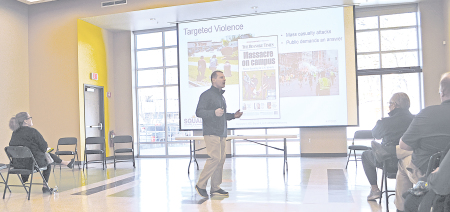All Over A Logo?
Published:
March 3rd, 2021
By:
Eric Davis

As I discussed in a column last month, this year the NWTF National Convention and Sport Show was held virtually this year instead of in Nashville. Part of the convention covered a brand strategy update from a research group that was hired by the NWTF National Board of Directors and NWTF back in 2019. This group had been doing surveys of turkey hunters, hunters who do not turkey hunt, and non-hunters on a variety of things to help the NWTF be better suited to grow membership going forward.
In the end, it resulted in a new logo being adopted by NWTF. The logo has all lower-case letters instead of all upper-case, it shows a head and neck profile of a bird and two turkey tracks that kind of imitate the fan of a strutting bird. The artwork was inspired by cave drawings found in the southwest United States. There was a video posted online that is almost an hour long that goes over what research went into the decision to change the logo. You can find it if you go on Youtube and search for “new NWTF logo.”
When I attended the convention in 2020, the same research group gave a talk about what they had done already and how they came up with a better way to phrase why hunters hunt when asked. They suggested the phrase, “I am a conservationist; therefore, I hunt.” Typically, hunters put conservation second to hunting because they look at it from the standpoint of hunting license sales and firearm, ammunition, and equipment sales directly fund conservation efforts. While this is true, conservation can happen without hunting because conservation is defined as wise use of something. If there is a limited amount, wise use may mean not taking any right now to try to increase the amount later to where some can be taken.
However, the North American model of conservation relies on hunting as a tool to ensure healthy game species populations because it allows for controlled takes while having the users fund it with minimal cost to the managers. So, by saying that you are a conservationist is a more welcoming approach to non-hunters who might be swayed, but then saying therefore you hunt opens a conversation to explain how hunting funds conservation in the United States.
Back to the new logo. On many online forums and on Facebook, many people were quick to criticize the change from a few different viewpoints. The first was on the look of the logo overall. The drawing is less anatomically correct compared to the previous logo of 3 walking turkeys. They also attacked the choice to use lower-case letters. That decision was to make it seem less aggressive or bold. In digital correspondence (such as emails, texts, online forums), using all upper-case letters is often seen as the equivalent of shouting or yelling. Some viewed this as being too soft on millennials or the Gen Z population by “giving in” to them. The other side of the attack on the logo was the money spent by NWTF to have this group do their research. After 2020 was extremely rough on the NWTF by stopping the main source of fundraising (banquet dinners), the NWTF laid off employees and made pay cuts to try to weather the storm. However, the decision to spend the money had been made in 2019 and was factored into their budgeting for 2020 and 2021 (and even further into the future).
What was promising to see was some volunteers from across the country stand up and say, what the logo looks like is not changing the reason why I am part of the NWTF. Nothing has changed in the mission statement; it still is to conserve the wild turkey and to preserve our hunting heritage. If you ask me, if the change of a logo is going to make someone stop getting more people into hunting, help improve habitat, and get greater access to places to hunt, then maybe they were not in it for the right reasons anyway.
Author: Eric Davis - More From This Author
Comments








